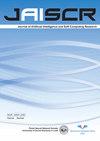基于情感语音的时频表示解读 DNN 模型中的卷积层
IF 2.4
3区 计算机科学
Q2 COMPUTER SCIENCE, ARTIFICIAL INTELLIGENCE
Journal of Artificial Intelligence and Soft Computing Research
Pub Date : 2023-12-01
DOI:10.2478/jaiscr-2024-0001
引用次数: 0
摘要
摘要 本文介绍了语音信号在卷积神经网络各层中的表示关系。利用 Grad-CAM 算法确定的激活图,分析了时频空间中的能量分布及其与所考虑的情感语篇的前音特性之间的关系。在对富有表现力的语音分类任务进行初步实验后,我们选择了 CQT-96 时频表示法。此外,在研究的主要实验阶段,我们还使用了带有三个卷积层的定制 CNN 架构。根据已完成的分析,我们展示了激活水平与基频轨迹发声部分变化之间的关系。因此,我们描述了六种情绪状态下的单个激活图、能量分布和基频轨迹之间的关系。结果表明,卷积神经网络在学习过程中使用了类似的时频表征片段,这些片段也与情绪语音的前音特性有关。我们还分析了所获得的激活图与时域包络的关系。这有助于观察语音信号能量在个体情绪状态分类中的重要性。最后,我们比较了 CQT 表征的能量分布与个别情绪状态掩码重叠区域能量的关系。结果,我们获得了关于特定情绪的选定语音信号表示能量分布变化的信息。本文章由计算机程序翻译,如有差异,请以英文原文为准。
Interpreting Convolutional Layers in DNN Model Based on Time–Frequency Representation of Emotional Speech
Abstract The paper describes the relations of speech signal representation in the layers of the convolutional neural network. Using activation maps determined by the Grad-CAM algorithm, energy distribution in the time–frequency space and their relationship with prosodic properties of the considered emotional utterances have been analysed. After preliminary experiments with the expressive speech classification task, we have selected the CQT-96 time–frequency representation. Also, we have used a custom CNN architecture with three convolutional layers in the main experimental phase of the study. Based on the performed analysis, we show the relationship between activation levels and changes in the voiced parts of the fundamental frequency trajectories. As a result, the relationships between the individual activation maps, energy distribution, and fundamental frequency trajectories for six emotional states were described. The results show that the convolutional neural network in the learning process uses similar fragments from time–frequency representation, which are also related to the prosodic properties of emotional speech utterances. We also analysed the relations of the obtained activation maps with time-domain envelopes. It allowed observing the importance of the speech signals energy in classifying individual emotional states. Finally, we compared the energy distribution of the CQT representation in relation to the regions’ energy overlapping with masks of individual emotional states. In the result, we obtained information on the variability of energy distributions in the selected signal representation speech for particular emotions.
求助全文
通过发布文献求助,成功后即可免费获取论文全文。
去求助
来源期刊

Journal of Artificial Intelligence and Soft Computing Research
COMPUTER SCIENCE, ARTIFICIAL INTELLIGENCE-
CiteScore
7.00
自引率
25.00%
发文量
10
审稿时长
24 weeks
期刊介绍:
Journal of Artificial Intelligence and Soft Computing Research (available also at Sciendo (De Gruyter)) is a dynamically developing international journal focused on the latest scientific results and methods constituting traditional artificial intelligence methods and soft computing techniques. Our goal is to bring together scientists representing both approaches and various research communities.
 求助内容:
求助内容: 应助结果提醒方式:
应助结果提醒方式:


